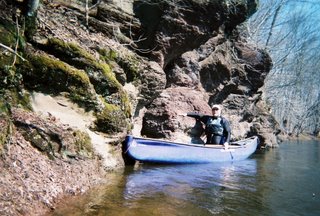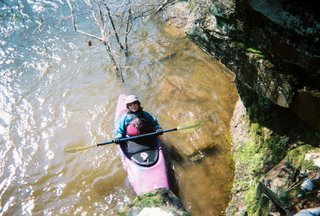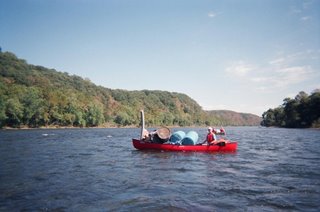
The following press release from
Delaware Riverkeeper announces that the 300 ft. stream buffer that applies to state designated category one waterways has been upheld by the NJ Supremes, a major and welcome defeat for sprawl mongers like Hovnanian and Toll Brothers.
Streams that are not designated category one receive a 150' buffer from new land development. None of the rules apply to agricultural activities. Indeed, it has been revealed that NJDEP has abused a loophole that allows developers to apply the 150' rule to category one streams (instead of the required 300') on land that is being converted from agricultural use to development. A review of NJDEP's sneaky policy has been promised.
NJ now has some of the tougher buffer requirements in the nation. It is pretty much inconceivable that largely rural states like PA and NY will adopt similar laws. Only a few PA municipalities within the Delaware River Basin have adopted strong buffer rules, Solebury Twp. being an example.
________________________________________
300 FOOT BUFFER RULE UPHELD
NJ Supreme Court denies developers' appeal of stormwater regulations
The New Jersey Supreme Court denied the New Jersey's Builders Association petition challenging the 300 foot buffer rule contained in New Jersey's stormwater regulations adopted in 2004.
"The Appellate Division decision upholding the 300 foot buffer rule stands. We were notified late yesterday that the Supreme Court has rejected the New Jersey Builders Association Petition for certification of the buffer rule", said Carter Strickland, lead counsel in the case and Professor of Law at Rutgers Environmental Law Clinic.
New Jersey adopted sweeping stormwater regulations in 2004, which included a requirement for 300 foot buffers on either side of Category 1 streams and their drainage area. Environmental organizations in New Jersey worked for many years towards the adoption of the regulations, which have been in effect for over two years. The New Jersey Builders Association (NJBA) opposed the regulations and challenged DEP's authority to issue the regulatory requirement claiming the buffer requirement functioned as a "no build" provision "directly regulating the use of land without regard to stormwater control or management and
promulgated by the DEP without state-wide land use regulatory jurisdiction."
The Appellate Court rejected the argument In April 2006, recognizing DEP's broad authority for protecting water quality and ecosystem health. The Appellate Court stated, "The Legislature, in variety of measures, has given the DEP a wide array of power to address water
quality and pollution concerns beyond traditional floodwater control, and to promulgate rules to protect the waters of the State." The correlation of riparian land use and water quality was noted in the Appellate ruling.
"The Supreme Court's denial to hear the NJBA's challenge reaffirms DEP's powers and sets national precedent for stormwater management", said Maya van Rossum, the Delaware Riverkeeper. "The lesson learned here is that environmental regulators can and should approach stormwater management in a comprehensive manner, preventing runoff and
pollution by keeping natural systems intact", said van Rossum.
"This validation sets the record straight about the importance natural stream systems play in the protection of water quality and stormwater management", said Eric Stiles, Vice President for Conservation and Stewardship, NJ Audubon Society. "This is great news for our streams
and their habitat".
"This decision will strengthen protection of local waterways and help municipalities plan for protection of their stream corridors," said Sandy Batty, Executive Director, Association of New Jersey Environmental Commissioners.
Other states across the nation have been watching the NJBA's attack on NJDEP's powers to regulate and protect the environment. The decision marks the end of the road for this legal challenge.
 Delaware River running high below the Delaware Water Gap
Delaware River running high below the Delaware Water Gap














